Archives
- By thread 5363
-
By date
- June 2021 10
- July 2021 6
- August 2021 20
- September 2021 21
- October 2021 48
- November 2021 40
- December 2021 23
- January 2022 46
- February 2022 80
- March 2022 109
- April 2022 100
- May 2022 97
- June 2022 105
- July 2022 82
- August 2022 95
- September 2022 103
- October 2022 117
- November 2022 115
- December 2022 102
- January 2023 88
- February 2023 90
- March 2023 116
- April 2023 97
- May 2023 159
- June 2023 145
- July 2023 120
- August 2023 90
- September 2023 102
- October 2023 106
- November 2023 100
- December 2023 74
- January 2024 75
- February 2024 75
- March 2024 78
- April 2024 74
- May 2024 108
- June 2024 98
- July 2024 116
- August 2024 134
- September 2024 130
- October 2024 141
- November 2024 171
- December 2024 115
- January 2025 216
- February 2025 140
- March 2025 220
- April 2025 233
- May 2025 239
- June 2025 303
- July 2025 176
-
Webcast Invitation | SAP BTP Expert Series: Data, Analytics and Planning
A Virtual Learning Series for Achieving Better Business Outcomes in Data, Analytics, and Planning

SAP BTP Expert Series A Virtual Learning Series for Achieving Better Business Outcomes
in Data, Analytics, and Planning
Dear Customer,
We are excited to invite you to our upcoming SAP BTP Expert Series on SAP Data, Analytics and Planning, specially designed for decision-makers and practitioners like you.
Highlights:
- Bite-Sized Insights: Focus sessions delivering key knowledge in digestible, actionable segments.
- Strategic Focus: Content tailored for leaders, helping you leverage data for impactful decision-making.
- Expert Guidance: Learn directly from SAP and Partner professionals with deep expertise in data, analytics and planning.
Why Attend?
This session is crafted to empower you with practical, strategic insights, enhancing your ability to make data-driven decisions and optimize outcomes in your organization.
Choose the session you want to join to help you achieve better business outcomes!Best regards,
SAPJoin our upcoming sessions: 
Elevate Your Marketing Game: Planning for ROI with SAP Analytics Cloud 
SAP BW Modernization – Move to SAP Datasphere BW Bridges 
Contact us
See our complete list of local country numbers

SAP (Legal Disclosure | SAP)
This e-mail may contain trade secrets or privileged, undisclosed, or otherwise confidential information. If you have received this e-mail in error, you are hereby notified that any review, copying, or distribution of it is strictly prohibited. Please inform us immediately and destroy the original transmittal. Thank you for your cooperation.
You are receiving this e-mail for one or more of the following reasons: you are an SAP customer, you were an SAP customer, SAP was asked to contact you by one of your colleagues, you expressed interest in one or more of our products or services, or you participated in or expressed interest to participate in a webinar, seminar, or event. SAP Privacy Statement
This email was sent to info@learn.odoo.com on behalf of the SAP Group with which you have a business relationship. If you would like to have more information about your Data Controller(s) please click here to contact webmaster@sap.com.
This e-mail was sent to info@learn.odoo.com by SAP and provides information on SAP’s products and services that may be of interest to you. If you received this e-mail in error, or if you no longer wish to receive communications from the SAP Group of companies, you can unsubscribe here.
To ensure you continue to receive SAP related information properly, please add sap@mailsap.com to your address book or safe senders list.
by "SAP" <sap@mailsap.com> - 07:01 - 17 Nov 2024 -
LAST CALL !!! UNDERSTANDING AND IMPLEMENTATION OF RESPONSIBLE BUSINESS ALLIANCE (RBA VERSION 8.0) (27-28 NOV 2024)
Please call 012-588 2728
email to pearl-otc@outlook.com
FACE-TO-FACE PUBLIC PROGRAM
UNDERSTANDING AND IMPLEMENTATION OF RESPONSIBLE
BUSINESS ALLIANCE (RBA VERSION 8.0)
Venue : Dorsett Grand Subang Hotel, Selangor (SBL Khas / HRD Corp Claimable Course)
Date : 27 Nov 2024 (Wed) | 9am – 5pm By Mr Venu
28 Nov 2024 (Thu) | 9am – 5pm . .
COURSE OVERVIEW:
This intensive program provides comprehensive training in the revised Responsible Business Alliance (RBA) 8.0 requirements and auditing processes and procedures, the follow-up process and more. Get the best information on process approach with RBA Code of Conduct methodologies by attending this training.
OBJECTIVES
Here are the learning objectives for the two days training program; after completing this program, participants will be able to:
- Interpret and define the RBA Code of Conduct including regulatory & statutory requirements, specifically focusing on the labor and ethics requirements.
- Provide good corporate governance examples that aligned with the organization’s business scope of applications.
- Carry out the auditing process and activities, including process auditing, and techniques required to fulfil the standards’ requirements through a case study and mock audit exercises.
- Evaluate and report the significance of audit findings effectively.
TARGET GROUP:
Suitable for top management, management representative, management system committee, engineers, internal QMS / EMS / OSH MS auditors.
OUTLINE OF WORKSHOP
DAY 1
1) The Formation Of Responsible Business Alliance (RBA)
a) History behind RBA
b) The necessity in current times
c) Labour law/regulation and RBA
2) An Introduction to RBA
a) Defining the RBA Code of Conduct (V8.0 ) Internal Audit Scope of Work
b) RBA Code of Conduct Components Overview
c) The Approach of RBA Internal Auditing
3) Difference between Version 7.0 vs 8.0 in the following requirement
a) Labour
b) Occupational Health and Safety
c) Management System
d) Code of Conduct requirement in organization and facility
4) Module 2 - RBA Code of Conduct in depth
a) The moral and ethical view
b) How not to just tick the box
c) The wholesome approach for the implementation
d) ILO and OECD guidelines
5) The RBA Tools, Program and Service
a) As platform to improve supply chain
b) Responsible Labour Initiative (RLI)
6) Requirements to participate in RBA membership and programs
a) Labor – Total of 7 Elements
b) Health & Safety – Total of 8 Elements
c) Environmental – Total of 8 Elements
d) Ethics – Total of 8 Elements;
e) Management Systems Total of 12 Elements
DAY 2
7) RBA Audit Requirement
a) Validated Audit Process (VAP)
b) VAP Classifications
c) The Four Phases of An Effective Internal Auditing
d) The Process Approach to Auditing
e) Identifying Audit Inputs Information
8) Conducting the Audit (Practical)
a) Collect Audit Objective Evidence
b) Reporting the Auditing Findings
c) Post Audit Activities
d) Audit Closure
9) Wrap-Up
a) Post-Questionnaire / Quiz
b) Q&A
c) Summary & Wrap-up
** Certificate of attendance will be awarded for those who completed the course
ABOUT THE FACILITATOR
MR. VENU
Venu has been working in Quality and Analytics field for about 12 years. Started is a career after completed his higher education in University Malaya majoring in Material Engineering, with Motorola Semiconductor in 2006. He is a practicing Six Sigma Black Belt, with more than 15-year experience.
Obtaining is six sigma training with Motorola, he was not only well versed in the theoretical concept but the hands-on approach in solving complex problems, driving process improvement activities, and quality across an organization. In later part of his career, he was involved in Big data Analytics, and spend considerable time, on implementing Analytics Concepts, such as Artificial Intelligence on the Manufacturing process, automated decision making and predictive concept manufacturing.
His tenure in Western Digital marked the time where manufacturing process going through automation and data-driven decision making and relying less on human dependent manual labour. His participation in the Industrial 4.0 core team was instrumental to drive this change across an organization. His team was actively involved creating and implementing artificial modelling to reduce effort spend to find the root cause. This much relieved the engineers to focus more on actual improvement and another task instead of firefighting to find root causes.
In his working experience he was exposed to many real-life case studies in engineering and manufacturing. A part of his career, he has been involved actively in training organization in six sigma, process improvement, analytics, and other related subjects for the last seven years. He is well versed in his subject matters and deeply passionate about sharing his knowledge with everyone. As a trainer, he understands the need for both quality and analytics and how to make both works supplementing each other to bring organization to the new industrial age.
Beside process improvement and analytics, he has also been actively involved in the ISO standard implementation and audit. He is familiar and working with ISO 9001, IATF 16949, ISO 45001, ISO 14001 and ISO17025. He has been a core tool adviser for IATF16949 during his work experience in automotive semiconductor and precision parts for manufacturing to automotive parts. He has been a risk management advisor for many ISO implementation in a various organization he served and his consulting role later.
In the non-technical area, he has been actively involved in the EICC committee, which later transformed as RBA and Business Social Compliance Initiative (BSCI). His in-depth knowledge in understanding the manufacturing process, able to translate into the insight on how to comply with the social requirement of the manufacturing process.
(SBL Khas / HRD Corp Claimable Course)
TRAINING FEE
2 days Face-to-Face Public Program
RM 2250.00/pax
(excluded 8% SST)
Group Registration: Register 3 participants from the same organization, the 4th participant is FREE.
(Buy 3 Get 1 Free) if Register before 21 Nov 2024. Please act fast to grab your favourite training program!We hope you find it informative and interesting and we look forward to seeing you soon.
Please act fast to grab your favorite training program! Please call 012-588 2728
or email to pearl-otc@outlook.com
Do forward this email to all your friends and colleagues who might be interested to attend these programs
If you would like to unsubscribe from our email list at any time, please simply reply to the e-mail and type Unsubscribe in the subject area.
We will remove your name from the list and you will not receive any additional e-mail
Thanks
Regards
Pearl
by "sump@otcmarketing.com.my" <sump@otcmarketing.com.my> - 09:16 - 17 Nov 2024 -
RE: RAJ
Hi,
I was checking your website on behalf this email ”info@learn.odoo.com ”and see you have a good design and it looks great, but it's not ranking on Google and other major search engines.
With your permission : I would like to send you a SEO report with prices showing you a few things to greatly improve these search results for you. These things are not difficult, and my report will be very specific. It will show you exactly what needs to be done to move you up in the rankings dramatically.
May I send you a best quote?
Thanks,
by "Raj" <ahmedmonirhossain20@gmail.com> - 07:32 - 17 Nov 2024 -
Fix your location data headache
Fix your location data headache
Hi MD Abul,
Looking for location data resources and not sure where to start?
We got you covered! Here you can find a couple of the latest topics covered in our blog, let us know which one of these you find the most useful:
- Geocoding: Building a Zip Code to Coordinates Converter
- The Quickest Way to Build an Address Autocomplete API
- Comparison of Popular Enterprise MDM Tools
- How to Build a Zip Code to Time Zone Database in 5 steps
If you need additional resources or want to have a further conversation regarding location data, let us know, we are happy to chat!
Best wishes,
Quentin RichelleLocation Data Team+32 472 39 43 17quentin.richelle@geopostcodes.com-------------------------GeoPostcodes.comThe most comprehensive postal database in the worldGeoPostcodes, Bld Bischoffsheim 15, 1000 Bruxelles, Belgium
by "Quentin Richelle" <quentin.richelle@geopostcodes.com> - 06:28 - 16 Nov 2024 -
The week in charts
The Week in Charts
Global energy needs, green commodities, and more Share these insights
Did you enjoy this newsletter? Forward it to colleagues and friends so they can subscribe too. Was this issue forwarded to you? Sign up for it and sample our 40+ other free email subscriptions here.
This email contains information about McKinsey's research, insights, services, or events. By opening our emails or clicking on links, you agree to our use of cookies and web tracking technology. For more information on how we use and protect your information, please review our privacy policy.
You received this email because you subscribed to The Week in Charts newsletter.
Copyright © 2024 | McKinsey & Company, 3 World Trade Center, 175 Greenwich Street, New York, NY 10007
by "McKinsey Week in Charts" <publishing@email.mckinsey.com> - 03:49 - 16 Nov 2024 -
EP138: How do AirTags work?
EP138: How do AirTags work?
WorkOS: Your app, Enterprise Ready.͏ ͏ ͏ ͏ ͏ ͏ ͏ ͏ ͏ ͏ ͏ ͏ ͏ ͏ ͏ ͏ ͏ ͏ ͏ ͏ ͏ ͏ ͏ ͏ ͏ ͏ ͏ ͏ ͏ ͏ ͏ ͏ ͏ ͏ ͏ ͏ ͏ ͏ ͏ ͏ ͏ ͏ ͏ ͏ ͏ ͏ ͏ ͏ ͏ ͏ ͏ ͏ ͏ ͏ ͏ ͏ ͏ ͏ ͏ ͏ ͏ ͏ ͏ ͏ ͏ ͏ ͏ ͏ ͏ ͏ ͏ ͏ ͏ ͏ ͏ ͏ ͏ ͏ ͏ ͏ ͏ ͏ ͏ ͏ ͏ ͏ ͏ ͏ ͏ ͏ ͏ ͏ ͏ ͏ ͏ ͏ ͏ ͏ ͏ ͏ ͏ ͏ ͏ ͏ ͏ ͏ ͏ ͏ ͏ ͏ ͏ ͏ ͏ ͏ ͏ ͏ ͏ ͏ ͏ ͏ ͏ ͏ ͏ ͏ ͏ ͏ ͏ ͏ ͏ ͏ ͏ ͏ ͏ ͏ ͏ ͏ ͏ ͏ ͏ ͏ ͏ ͏ ͏ ͏ ͏ ͏ ͏ ͏ ͏ ͏ ͏ ͏ ͏ ͏ ͏ ͏ ͏ ͏ ͏ ͏ ͏ ͏ ͏ ͏ ͏ ͏ ͏ ͏ ͏ ͏ ͏ ͏ ͏ ͏ ͏ ͏ ͏ ͏ ͏ ͏ ͏ ͏ ͏ ͏ ͏ ͏ ͏ ͏ ͏ ͏ ͏ ͏ ͏ ͏ ͏ ͏ ͏ ͏ ͏ ͏ Forwarded this email? Subscribe here for moreWorkOS: Your app, Enterprise Ready. (Sponsored)
WorkOS is a modern identity platform for B2B SaaS.
→ A complete user management solution along with SSO, Directory Sync (SCIM), and Fine-Grained Authorization (FGA).
→ Integrate in minutes with modular and easy-to-use APIs
→ A self-serve onboarding flow that guarantees a seamless UX for your customers' IT admins when setting up SSO and SCIM.
→ Free user management up to 1 million MAUs. Comes standard with social login, MFA, RBAC, bot protection, and more.
WorkOS powers hundreds of high-growth companies including Perplexity, Vercel, and Cursor.Ship SSO and SCIM this afternoon
This week’s system design refresher:
Big-O Notation in 3 Minutes (Youtube video)
How do AirTags work?
What is a deadlock?
How Do Search Engines Work?
SPONSOR US
Big-O Notation in 3 Minutes
How do AirTags work?
AirTags work by leveraging a combination of Bluetooth technology and the vast network of Apple devices to help you locate your lost items.
Here's a breakdown of how they function:Bluetooth Signal: Each AirTag emits a secure Bluetooth signal that can be detected by nearby Apple devices (iPhones, iPads, etc.) within the Find My network.
Find My Network: When an AirTag comes within range of an Apple device in the Find My network, that device anonymously and securely relays the AirTag's location information to iCloud.
Location Tracking: You can then use the Find My app on your own Apple device to see the approximate location of your AirTag on a map.
Limitations:
Please note that AirTags rely on Bluetooth technology and the presence of Apple devices within the Find My network. If your AirTag is in an area with few Apple devices, its location may not be updated as frequently or accurately.🚀pgai Vectorizer - Automate embeddings for search and RAG, all within PostgreSQL (Sponsored)
Launch Alert: pgai Vectorizer automates embedding creation in PostgreSQL, keeping your embeddings up to date as your data changes—no manual syncing required. You can also test models, switch seamlessly, and manage everything with SQL. Available free on GitHub or fully managed in Timescale Cloud.
What is a deadlock?
A deadlock occurs when two or more transactions are waiting for each other to release locks on resources they need to continue processing. This results in a situation where neither transaction can proceed, and they end up waiting indefinitely.
Coffman Conditions
The Coffman conditions, named after Edward G. Coffman, Jr., who first outlined them in 1971, describe four necessary conditions that must be present simultaneously for a deadlock to occur:Mutual Exclusion
Hold and Wait
No Preemption
Circular Wait
Deadlock Prevention
Resource ordering: impose a total ordering of all resource types, and require that each process requests resources in a strictly increasing order.
Timeouts: A process that holds resources for too long can be rolled back.
Banker’s Algorithm: A deadlock avoidance algorithm that simulates the allocation of resources to processes and helps in deciding whether it is safe to grant a resource request based on the future availability of resources, thus avoiding unsafe states.
Deadlock Recovery
Selecting a victim: Most modern Database Management Systems (DBMS) and Operating Systems implement sophisticated algorithms for detecting deadlocks and selecting victims, often allowing customization of the victim selection criteria via configuration settings. The selection can be based on resource utilization, transaction priority, cost of rollback etc.
Rollback: The database may roll back the entire transaction or just enough of it to break the deadlock. Rolled-back transactions can be restarted automatically by the database management system.
Over to you: have you solved any tricky deadlock issues?
How Do Search Engines Work?
Search engines work through a combination of three core processes:
Crawling: Search engines use automated programs called "crawlers" to discover and download web pages from the internet. These crawlers start with a list of known web pages (seeds) and follow links on those pages to find new ones, creating a vast network of interconnected content.
Indexing: The information collected by the crawlers is then analyzed and organized into a massive database called an index. This process involves extracting key elements such as keywords, content type, freshness, language, and other classification signals to understand what each page is about and how relevant it might be to different search queries.
Serving search results: When a user enters a query, the search engine's algorithm sifts through the index to identify the most relevant and helpful pages. Here's a breakdown of how it works:
Query Analysis: The search engine analyzes the user's query to understand its meaning and intent. This includes identifying keywords, recognizing synonyms, and interpreting context.
Retrieval: The search engine retrieves relevant pages from its vast index based on the query analysis. This involves matching the query's keywords with the indexed content of web pages.
Ranking: The retrieved pages are then ranked based on their relevance and other factors.
SPONSOR US
Get your product in front of more than 1,000,000 tech professionals.
Our newsletter puts your products and services directly in front of an audience that matters - hundreds of thousands of engineering leaders and senior engineers - who have influence over significant tech decisions and big purchases.
Space Fills Up Fast - Reserve Today
Ad spots typically sell out about 4 weeks in advance. To ensure your ad reaches this influential audience, reserve your space now by emailing sponsorship@bytebytego.com
Like
Comment
Restack
© 2024 ByteByteGo
548 Market Street PMB 72296, San Francisco, CA 94104
Unsubscribe
by "ByteByteGo" <bytebytego@substack.com> - 11:37 - 16 Nov 2024 -
EFFECTIVE WAREHOUSE OPERATION AND INVENTORY MANAGEMENT - MALAY VERSION - (2 & 3 Dec 2024)
LIVE ONLINE PROGRAM
EFFECTIVE WAREHOUSE OPERATION
AND INVENTORY MANAGEMENT
(PENGURUSAN GUDANG DAN INVENTORI YANG BERKESAN )
- MALAY VERSION-
Venue : Online Training (Via Zoom) (SBL Khas / HRD Corp Claimable Course)
Date : 2 Dec 2024 (Mon) | 9am - 5pm By SH Yeo
3 Dec 2024 (Tue) | 9am - 5pm
OVERVIEW:
The demand on warehousing efficiency is one of the key toward any company overall operational efficiency as this particular area of a company operation is accounted for the biggest asset management and poor managing control will result in financial leakages.
This 2 days training program is to bring awareness, knowledge, and technique of warehouse and inventory management to warehouse and store employees in order to meet the challenging demand of businesses to stay ahead of competition.
In this program, participants will learn the key principal and technique of warehousing, inventory management, and focus more toward the important key elements of effective warehousing and inventory management.
LEARNING OUTCOMES:
By the end of the 2-day interactive session, the learning curve achieve will enable the following:-
- IDENTIFY current internal strength and weakness of the warehouse operation
- DEVELOPED an appropriate warehousing action plan to improve on the current level of operation
- UNDERSTAND the current warehouse and inventory risk and DECIDE on appropriate action plan to ELIMINATE the risk
- DEVELOPED skills and technique in managing inventory with the objective of reducing the inventory level
- UNDERSTAND important of inventory management and using the right tool to manage inventory based on activity
- IDENTIFY key issue with inventory accuracy and stock level and reduce or eliminate the problem
- UNDERSTAND the concept of 6S
- DEVELOPED the most effective layout for the warehouse
- UNDERSTAND the importance of location system and type of location system to deploy for most efficient operation
- APPLY the knowledge to job function
WHO MUST ATTEND:
This training program is highly recommended for employees involve in warehousing & store operation and employees in other department, which has related cross-functional relationship, for example, purchasing, production, and logistics departments.
METHODOLOGY:
This training will involve the following area to enhance learning:
- 14 hours training program over 2 days or 4 days x 3.5 hours per day online learning via Zoom or Microsoft Team with client license or training provider license
- Power point presentation in Bahasa Melayu and English
- Case studies / Brain storming session
- Discussion on subject of learning
- Facilitating by trainer to enhance understanding of subject matter
- Bilingual Notes will be provided (BM and English)
COURSE OUTLINE:
Topic Covered in Module
Participants Learning Objectives
1
Warehouse and Inventory Management Role and Objective
· Role of Stores and Warehouses in Business Operation
· Key Function and Objectives of Warehousing
· Key Principal of Warehouse and Inventory Management
· Public Warehouse
· Public Bonded Warehouse
· Private Bonded Warehouse
· Distribution Centre Warehouse
Participants to be aware and understand the real objective and purpose of a warehouse, and store operation.
2
Warehouse and Inventory Operational Best Practices
· Best Practices for Receiving
· Best Practices for Issuing
· Stock Quarantine procedure
· Stock Preservation procedure
· Putaway
· Inventory Picking system
· Managing Cross docking
Participants will get to know what are the best practices of each of the key operational process.
3
Putaway, Picking and Cross Docking Management
· Putaway
· Inventory Picking system
· Managing Cross docking
Understanding the important of implementing effective putaway, picking and cross docking system in the warehouse
4
Warehouse Layout and Location Management
· Type of Storage system
· Advantages and disadvantages of each type of storage system
· Process of Layout for effective storage
· Key Principle of improving warehouse layout
· Location system management
· Case study
The right process to designing a better layout for the warehouse and store for efficient storing of goods and the different type of location system.
5
Effective Inventory Management
· Type of Inventory in Warehouse
· Pareto Analysis (ABC Analysis / Rule of 80/20)
· KANBAN Supermarket system
· KANBAN 2 bin system
· Just in Time
· Consignment Stock
· Calculating Stock Replenishment Level (Min stock, Reorder Level and Safety Stock)
· Push system
· Pull system
This module will deliver knowledge and technique on proper inventory management system in term of stock replenishment, priority management system of stock and evaluating the best method to keep stock in the warehouse or store.
Participants will also learn the various inventory minimizing tool
6
Managing Inventory Accuracy
· Inventory management - Auditing for process and stock
· Inventory management - Understand Stock ABC Analysis key purpose
· Inventory management - Review Replenishment level with Safety and Reorder stock management
· Inventory Management - Push and Pull Inventory
Stock accuracy is one of the key problematic area in warehouse and store operation.
This module will deliver the knowledge and technique to a systematic stock accuracy management system.
7
Reducing Wastages and Risk in Warehouse and Inventory Management
· 7 key wastes of Warehouse and Inventory Management
· Problem solving method to eliminate waste
· Managing Risk in Warehouse Operation
· Mitigation steps to eliminate Risk
· Case study
The participants to learn the key wastes in warehouse and store management and how to avoid.
Case studies
8
Understanding the concept of 6S warehouse system
· What is 6S
· 5S housekeeping versus 6S system
· Step to efficient 6S implementation
· 6S scoring for improvement
This module will bring awareness and develop the knowhow on how to implement 6S in the workplace.
** Digital Certificate of attendance will be awarded for those who completed the course
ABOUT THE FACILITATOR
SH Yeo
Academic & Professional Qualifications
Certified HRDF Trainer (TTT certificate number 4669)
Certified Professional Trainer and Facilitator (University Malaya, Malaysia)
- Diploma in Human Resource Management (UK)
- Diploma in Production Management (USA)
- MBA in Supply Chain Management (USA)
- 33 year of management experience in supply chain and operation
- Trainer & consultant since 2008
Mr. Yeo is a very experienced supply chain and operational manager and during his working career, spanning over 33 years, he has held various positions as following:-
1987 - with International Paint (later known as Akzo Nobel International Paint) as a Storekeeper
1989 to 1992 @ Warehouse Executive
1992 to 1993 @ Warehouse Manager
1993 to 1998 @ Production Manager
1998 to 1999 @ join Melandas as a Logistics and Purchasing Manager.
1999 to 2004 @ join Dian Creative as a Material Manager
2004 to 2006 @ join Joubert SA Malaysia as Purchasing Manager
2006 to 2008 @ Procurement Manager
2008 to 2019 @ Supply Chain Manager and Company Director
His major achievements include the following:-
1. Increase productivity in the production department by providing intrinsic and extrinsic motivation to the employees from 1993 to 1998.
2. Making major decision to advise a MNC company to drop LMW warehousing scheme and adopting MITI PC1 and 2 exemption system to help company to be more competitive in the local and oversea market in 1998.
3. Co coordinating Kastam licensing and reporting to solve company reporting and licensing issue with Kastam
4. Establishing control and procedure and bringing awareness to employee on important of supply chain control in 2004 until 2019 and achieving 100% shipment performances to customers
5. Involve in negotiating with a major customer from Europe to secure new contract and beside visiting overseas suppliers for performances improvement and selection of new suppliers
6. Carry out new product development by working with engineering and design team and suppliers, including spending on site at supplier premise to solve new product design issue
7. Introduced new procedures in warehouse and operation for better control of operation and reporting system
8. Managing and conducting cost reduction management program from 2008 to 2013 and reduce cost for the company by up to RM6.5 mil.
9. Involve in managing suppliers contract and involving in proposing and drafting new contract and contract renewal for suppliers from 2008 until 2019 (early retirement) by working with suppliers and internal stakeholders with guidance from legal expert.
10. Managing Non Disclosure Agreement with suppliers to protect company intellectual property
He has been conducting training since 2008 and recently retired as a fulltime supply chain manager and company director to concentrate on full time training and coaching.
(SBL Khas / HRD Corp Claimable Course)
Online training Fee
14 hours online training
RM 1,296.00/pax (excluded 8% SST)
Group Registration: Register 3 participants from the same organization, the 4th participant is FREE.
(Buy 3 Get 1 Free) if Register before 20 Nov 2024. Please act fast to grab your favorite training program!We hope you find it informative and interesting and we look forward to seeing you soon.
Please act fast to grab your favorite training program! Please call 012-588 2728
or email to pearl-otc@outlook.com
Do forward this email to all your friends and colleagues who might be interested to attend these programs
If you would like to unsubscribe from our email list at any time, please simply reply to the e-mail and type Unsubscribe
in the subject area. We will remove your name from the list and you will not receive any additional e-mail
Thanks
Regards
Pearl
by "sump@otcsb.com.my" <sump@otcsb.com.my> - 02:36 - 16 Nov 2024 -
Measurement and Calibration System-4,5 Dec 24-Wyndham Grand Bangsar Kuala Lumpur Hotel
Please call 012-588 2728
email to pearl-otc@outlook.com
FACE-TO-FACE PUBLIC PROGRAM
Measurement and Calibration System
Venue : Wyndham Grand Bangsar Kuala Lumpur Hotel (SBL Khas / HRD Corp Claimable Course)
Date : 4 Dec 2024 (Wed) | 9am – 5pm By Nadhra
5 Dec 2024 (Thu) | 9am – 5pm .
INTRODUCTION
This course will help those who are using or calibrating measurement instruments, calibration coordinators, or for those responsible for maintaining quality, especially by persons responsible for the contracting of calibration services. A good measurement system is important to conform to any quality management systems. This course is intended to cover commonly used calibration terminology and practices in the industry.
LEARNING OBJECTIVES
- Describe what is metrology, which science of measurement
- Explain the importance of measurement in our lives and international trade
- Understanding the factors that affect measurements
- Understand the commonly used terminologies in measurements and calibration
WHO SHOULD ATTEND
- Production
- Quality
- QA/QC
- Executive
- Engineers
- Technicians
OUTLINE OF WORKSHOP
1. Introduction to Metrology : Science of Measurements
a. What is Metrology?
b. Measurements in our lives & workplace.
c. The importance of good measurement.
2. Development & Issues in Metrology
a. The rise of the need of better measurements.
b. Differences between resolution, accuracy, precision.
c. What is measurement uncertainty?
d. Type A and Type B Uncertainty
3. Standards & Standardization
a. Differences in standard in lab against international standard.
b. The concept of traceability and respective requirements
4. Managing Metrology System
a. Part of Metrology System
b. Calibration interval and determination
c. Calibration record keeping
d. Calibration procedures
e. Personnel Training
5. Making Good Measurements
a. Measuring Instruments
b. Measuring Process
c. Measurement Assurance
6. Unit and Measuring Instruments
a. Basic SI units
b. Derivatives Units
7. Other resources/sources of information
** Digital Certificate of attendance will be awarded for those who completed the course
ABOUT THE FACILITATOR
Nadhra is a highly qualified technical trainer in the areas of calibration and laboratory management. Graduated with a Bachelor of Mechanical Engineering from University of Minnesota (Twin Cities, USA), she is a passionate and lifelong learner who continued her education by obtaining a Masters of Science (Management of Industry & Technology) from UKM and an MBA from Wawasan Open University.
As a certified HRDF trainer, she believes in collaborative sessions which emphasize interactive, hands-on training. Her strength is combining the fundamental theories of technical training with highly interactive materials to help participants gain hands-on experience and achieve practical learning outcomes from her classes. With 15 years of experience in the field of Quality Assurance Management?, Project
Management, Calibration, Audit and Laboratory Management, Nadhra combines the fundamental theories of the subject with real-life examples from her own laboratory experience and laboratories she has
collaborated with globally. She began her career in 2004 as an engineer and over the past 15 years has worked in multiple multi-national companies from the East to the West.Among her notable achievements are:
1. Appointed as the Approved Signatories in the Calibration Field of Electrical, Mechanical, Temperature & Volumetric at various accredited labs under Skim Akreditasi Makmal Malaysia where she served previously.
2. Appointed as the Internal auditor for calibration laboratories across the Asia-Pacific, which are accredited under A2LA (USA Accreditation Body) KOLAS (S Korea Accreditation Body), JCSS (Japan Accreditation Body) for the appointed OEM calibration work.
3. Obtained laboratory accreditation from A2LA (USA Accreditation Body) for a start-up lab within 9 months.
4. Appointed as the Internal auditor for ISO 9001 (General Quality Management System), TS 16949 (Automotive Quality Management System), ISO 22000 (Food Safety Management System) for multi-national
(SBL Khas / HRD Corp Claimable Course)
TRAINING FEE
2 days Face-to-Face Public Program
RM 2,250.00/pax (excluded 8% SST)
Group Registration: Register 3 participants from the same organization, the 4th participant is FREE.
(Buy 3 Get 1 Free) if Register before 22 Nov 2024. Please act fast to grab your favorite training program!We hope you find it informative and interesting and we look forward to seeing you soon.
Please act fast to grab your favorite training program! Please call 012-588 2728
or email to pearl-otc@outlook.com
Do forward this email to all your friends and colleagues who might be interested to attend these programs
If you would like to unsubscribe from our email list at any time, please simply reply to the e-mail and type
Unsubscribe in the subject area. We will remove your name from the list and you will not receive any additional e-mail
Thanks
Regards
Pearl
by "pearl@otcsb.com.my" <pearl@otcsb.com.my> - 11:01 - 15 Nov 2024 -
DEVELOPING SUPERVISORY SKILLS AND MANAGING PEOPLE TECHNIQUES FOR CONTINUAL IMPROVEMENTS(MALAY VERSION) - (9,10 Dec 2024)
Please call 012-588 2728
email to pearl-otc@outlook.com
FACE-TO-FACE PUBLIC PROGRAM
DEVELOPING SUPERVISORY SKILLS AND
MANAGING PEOPLE TECHNIQUES FOR
CONTINUAL IMPROVEMENTS
(MALAY VERSION)
Venue : Wyndham Grand Bangsar Kuala Lumpur Hotel (SBL Khas / HRD Corp Claimable Course)
Date : 09 Dec 2024 (Mon) | 9am – 5pm By Azman
10 Dec 2024 (Tue) | 9am – 5pm .
THE PROGRAM:
This program is specially developed for SUPERVISORS and TEAM LEADERS with the purpose to elaborate and deliberate the need to manage performance through supervision of work processes effectively so that the right focus could be given and the right measures could be identified to ensure that the desired results could be generated consistently.
The main philosophy behind this program is ‘There is no such thing as FAILURES. Just WRONG RESULTS. So, CHANGE STRATEGIES”. This program is a MUST for executives to enable them to be in control of their respective work processes by determining the RIGHT MEASURES.
What we do not measure, we cannot improve. Due to this, it is important that supervisors need to measure work process performance. It is the perennial function of all supervisors that work processes are effectively executed to ensure that these work processes will drive towards the right results.
Participants will be introduced with simple practical tools so that they are able to apply them accordingly so that they could put their job in better control and continue to seek for improvements through measuring the performance of work processes and its results.
PROGRAM SUMMARY:
- To identify new strategies as part of the Supervisory Skills Transformation Program so that we could continue to generate new results that could bring higher values to our customers.
- To improve current work systems so that we optimize what we have and energize the way we do things.
- To identify proper Supervisory Skills Transformation Program to take our level of competency to new levels.
PROGRAM OBJECTIVES:
- To provide fundamental understanding in critical elements in enhancing overall process and quality systems performance effectiveness.
- To provide awareness that performance can be measured and is the responsibility and obligation of each process owner and leaders.
- In order to build successful quality-based organizations we need to build process driven work systems that could sustain good performance.
THE TARGET PARTICIPANTS:
Managers, Executives and selected supporting staffs including :
- Production Supervisors
- Shift Team Leaders
- Unit Heads
- Section Heads
that need to acquire or polish up their supervisory and people management skills and ensure that the Company’s objectives are met. As a matter of fact this training workshop is suitable for all levels.
THE DELIVERY METHODOLOGY:
- Lectures
- Simulation activities
- Discussions and presentations
- Role Play
- Mock Training Sessions
- To be conducted in Bahasa Melayu
OUTLINE OF WORKSHOP
Topic 1: Understanding Supervisory and Managing People
This topic will discuss the relationship between supervisory effectiveness and managing people for performance and results. Supervisory skills are vital in order to manage people effectively. Since management is the art of getting work done through people, the ability to supervise would be essential in ensuring that each individual are able to focus on their tasks.
Topic 2: Motivate and Energize: The Essence of Management Skills
Team Activity: Management and Communication Games “Tying a ROPE Knot”
Participants will be exposed to some practical approaches towards motivating and energizing their team members. Main issues to be discussed would be such as Why Do We Work?, Why Are We Hired?, Energizing through Positive Conditioning, The ability to manage challenges and change.
Topic 3: Coaching and Mentoring for Effective Leadership and Supervision
This topic will focus on the importance of supervisors to have the technical skills in mentoring their teams. This topic will also focus on supervisors taking the role of leaders through coaching and mentoring so that team members will continue to give their commitment in their effort to generate the needed performances and drive towards achieving the desired results.
Topic 4: Communication and Interpersonal Skills in Supervisory Roles
Team Workshop: Understanding Your Personal Traits in Communication.
This topic will focus on communication and interpersonal skills in supervisory roles because supervisors not only need to get the job done but more importantly they need to get the job done through people. Therefore, it is so vital that messages are effectively conveyed and interpretations of messages could be made easier.
Q&A
Topic 5: Understanding the Relationship of People, Process and Technology
This topic will discuss the Organisational Golden Triangle which include People, Process and Technology. This topic will establish the importance of process in driving the right results.
Topic 6: Supervising Performance through Work Processes
This topic will help participants identify critical work processes that will have the greatest impact to their performance. Therefore the real secret in performance management is to have control over the execution of their respective work processes.
Topic 7: Determining and Measuring Work Processes Performance and Results for Effective Supervision
Activity: Identifying Vital Work Processes
This topic will identify work process measures and how it will drive towards the results. Participants will learn to develop skills in managing work process performance through the right process performance measures.
Workshop: Detailing Critical Work Processes and Measurements for Performance Management
The purpose of this workshop is to identify and measure critical work processes that defines the performance of the team members. This will allow supervisors to construct strategies for continual improvements in performance.
Workshop: Effective Performance Management “Identify Performance Root Cause and Measuring Effectiveness for Continual Improvements”
The purpose of this workshop is to introduce and develop skills in problem solving which is an important skill-set that a supervisor must have. Participants will identify what are the root causes of a certain issue or problem and mitigating these issues with relevant corrective actions.
Q&A
** Certificate of attendance will be awarded for those who completed the course
ABOUT THE FACILITATOR
- BSc (Computational Mathematics)
Eastern Illinois University, USA
- MBA (Management of Information Systems)
University of New Haven, USA
- Certified Lead Implementer ISO22301 BCMS and Lead Trainer
(Business Continuity Management Systems) by BVQI
- Certified Lead Implementer and Lead Trainer
Malaysia Sustainable Palm Oil (MSPO) Standards by SGS
- Certified Lead Implementer and Lead Trainer ISO9001:2015 QMS
(Quality Management Systems) at SGS Academy
- Certified HRDC Trainer
Trainer No. : 5254
- Accredited HRDC Trainer
Trainer ID : 19391
- Yang Dipertua PIBG
Sekolah Menengah Sains Sultan Haji Ahmad Shah, Kuantan (2007 - 2024)
- Vice President
Malaysian Bumiputera Training Providers (MBTA)
Tuan Haji Azman’s illustrious career started in 1986 as a Computer Science lecturer at the MARA University of Technology Pahang Branch (UiTM) specializing in Programming and Algorithm Development. He left UiTM in 1993 to join FPG Oleochemicals Sdn. Bhd. (FPG), a multi-national oil and gas company, as the Information Systems Manager. FPG is a joint venture between Felda and Procter and Gamble of the United States. He left FPG in 1995 to join the management team of Far East Holdings Berhad (FEHB), a public listed company owned by the State Government listed on the mainboard of BSKL under the plantations counter.
Tuan Haji Azman last position at FEHB was the Senior Manager of the Human Resources and Organisational Development Division at FEHB concentrating on human capital development, organizational work systems, company-wide administrative systems and monitoring implementation of the Group’s scheme of services. He was also the Quality Management Representative of FEHB’s Quality Management Systems ISO9001 Certification and the Secretary of the Risk Management Committee at FEHB. He was a resident trainer at FEHB for programs such as Building High Performance Individuals for Organisational Excellence, Train the Trainers and Effective Leadership and Communication to Bring the Best out of People. As a human resources practitioner, he has helped FEHB to develop its own Code of Conduct guidelines and helped to streamline FEHB’s administrative policies.
Tuan Haji Azman has established himself as a trainer in the areas of Corporate Motivation, Quality Management Systems, Determining and Measuring Key Performance Indicators (KPI), Conquering the Fears of Public Speaking and Performance Enhancement for Organisational Effectiveness. His dynamic, hyperactive and interactive training style has consistently received rave reviews from his clients and participants.
His hobbies include sports (badminton, football, tennis and bowling), reading and writing. His favourite authors are Robert Kiyosaki, Anthony Robbins and Zig Zigler. He has a book to his credit entitled “SUCCESS, HAPPINESS AND PERFORMANCE : They Are Within Our Control” which was published in 2007. He has also featured regularly at Pahang FM’s Motivasi Pagi.
(SBL Khas / HRD Corp Claimable Course)
TRAINING FEE
2 days Face-to-Face Public Program
RM 2,250.00/pax
(excluded 8% SST)
Group Registration: Register 3 participants from the same organization, the 4th participant is FREE.
(Buy 3 Get 1 Free) if Register before 29 Nov 2024. Please act fast to grab your favourite training program!We hope you find it informative and interesting and we look forward to seeing you soon.
Please act fast to grab your favorite training program! Please call 012-588 2728
or email to pearl-otc@outlook.com
Do forward this email to all your friends and colleagues who might be interested to attend these programs
If you would like to unsubscribe from our email list at any time, please simply reply to the e-mail and type Unsubscribe in the subject area.
We will remove your name from the list and you will not receive any additional e-mail
Thanks
Regards
Pearl
by "pearl@otcsb.com.my" <pearl@otcsb.com.my> - 08:30 - 15 Nov 2024 -
WINNING LEADERSHIP STAKEHOLDER ENGAGEMENT (25 – 26 Nov 2024)Wyndham Grand Bangsar Kuala Lumpur Hotel
Please call 012-588 2728
email to pearl-otc@outlook.com
FACE-TO-FACE PUBLIC PROGRAM
WINNING LEADERSHIP
STAKEHOLDER ENGAGEMENT
Venue : Wyndham Grand Bangsar Kuala Lumpur Hotel (SBL Khas / HRD Corp Claimable Course)
Date : 25 Nov 2024 (Mon) | 9am – 5pm By Daniel
26 Nov 2024 (Tue) | 9am – 5pm . .
COURSE OVERVIEW:
This highly exciting and innovative Leadership Stakeholder Engagement training workshop will focus on the practical and theoretical aspects of Influencing, Negotiation skills and Communicating with your stakeholders. The proven skills, techniques and knowledge within this highly practical course will take your ability to lead and engage with stakeholders to the next level of success.
You will learn how to build an ongoing relationship with all types and levels of stakeholders to ensure success in all you do. Also, many advanced skills of communication, influencing and engagement. The course is the highly interactive, practical and expert-focus of the content and style of training, designed to give participants knowledge of both the theory and practice of highly effective stakeholder management from both ‘understanding’ and ‘managing’ perspectives.
This highly interesting workshop incorporates tools and ideas used in Neuro-Linguistic Programming (NLP) that makes a real difference by enhancing and developing your leadership communication, building empathy and influencing skills to achieve significant Win-Win engagement results. By understanding how to use all your senses, using different styles & levels of language patterns and understanding thinking process you can achieve the things you want to at the workplace.
LEARNING OUTCOMES:
Participants will gain both the understanding and ability to improve their management or delivery of effective stakeholder outcomes
- Understand the Meaning of a Culture of Engagement
- Gaining Employee-Organisational Alignment
- Identifying and Clarifying Engagement Drivers
- How to Create An Engaged Workforce with Empathy
- Apply Superb Persuasion and Influencing techniques in gaining compliance
- Use the tools and techniques for coaching effectively
- Maximize on-the-job performance by helping team members to make improvements and positive changes
- Motivate others to actively seek out opportunities to contribute more of themselves to the business
- Resolve differences, handle team-member resistance, and confront excuses
- Build positive and supportive engaging Win-Win relationships with stakeholders
WHO WILL BENEFIT MOST FROM THIS WORKSHOP?
- Team Leader, Asst Manager, Manager, Senior Manager
- Managers and Aspiring Leaders in the Organisation
- Experienced supervisors with little or no formal management training
LEARNING METHODS USED
In this fun-filled highly engaging FACE-TO-FACE experiential learning, the training facilitator adopts a coaching and facilitative approach. It is very important to engage the participants in reviewing their own outcomes.
The fun-filled activities are designed to illustrate key issues that the participants are facing in engaging all stakeholders in the organization by using EQ & NLP tools to create illustrations, demonstrations and activities such as role plays, Mind development exercises, brainstorming and group discussions.
OUTLINE OF WORKSHOP
Module 1: The Meaning of a Culture of Engagement
In this session, participants will be made aware of the culture of engagement. They will be given the opportunity to give their observations on why the traditional system of reward and recognition fail in many organisations.
Key Learning Points:
- Why traditional reward and recognition approach fail
- Identifying the values of staff
- Employee engagement vs. Engagement motivation
Module 2: Gaining Employee-Organisational Alignment
In this session, participants will realize that the challenge for businesses is to create an environment where employees understand and commit to the company’s direction, strategy and goals. An organizational framework that addresses all the components of a business will be introduced to the participants. Participants will be encouraged to give their input into each component.
Key Learning Points:
- “Fit for purpose” organizational structure
- People, systems and processes
- Leadership
- positive work environment
- Organizational framework
Module 3: Engagement Drivers
In this session participants will learn that engagement leads to higher financial performance, higher customer satisfaction and higher employee retention. Participants will identify the engagement drivers and work on them.
Key Learning Points:
- Being a happy contributor and useful at work
- 4 stages of empowerment and effective empowerment strategies
- Identify the engagement drivers in your company
- The Twin Pillars of Motivation - Driving Forces at work
- Areas to ask in questionnaires to identify engagement drivers
Module 4: Persuasion and Influencing Stakeholders’ Commitment
In this session, participants will learn to use the techniques of persuasion so as to influence the people around them to be engaged. Participants will learn to develop and use the listening and questioning techniques to lead stakeholders’ commitment.
Learning Areas
- Overt & Covert Persuasion
- Building Empathy - Deep Listening techniques
- Pacing & Leading - Sharp Questioning techniques
- Resolve differences and handle team-member resistance
- Win-win approaches to engage stakeholders
Module 5: Fundamentals of Influencing Skills
In this session, participants will be coached on the fundamental techniques of influencing skills.
Learning Areas:
- “Pull” not “Push”
- Getting the other person to be involved in discussion
- Persuade, don’t manipulate
- Focus on behavior rather than personality
- Seek first to understand
Module 6: Creating An Engaged Workforce
In this session, participants will be coached on practical techniques on to how to get the workforce engaged in their work.
Learning Points:
- Engagement through Empowerment & Goals Achievement
- Commitment to organisations core values
- The Closing-Gap Approach
Module 7: Close
- Putting It All Together
- Review, Reinforce and Action Plan
** Certificate of attendance will be awarded for those who completed the course
ABOUT THE FACILITATOR
Daniel
- Certified Professional Trainer, MIM
- MBA (General) University of Hull, UK
- Council of Engineering Institutions (UK) Part I & II
- Associate Member of Institute of Electrical Engineers, UK
- ISO Standardization Internal Auditor
- NLP Master Trainer Certification, NFNLP US
- Certified Master Conversational Hypnotherapist, IAPCH US
- Certified Specialist in Neuro-Hypnotic Repatterning, SNLP US
- Diploma in International Sound Therapy, IAST Alicante, Spain
Daniel has more than 30 years experience in the corporate world, out of which 20 years has been spent on coaching and training: teaching Sales & Negotiation Skills, Management & Leadership skills - training Companies and individuals on Coaching & Mentoring Skills, Communication Skills, Neuro-Linguistic Programming (NLP) and Project Management skills. And in the process, continually coaching and motivating all his students, staffs and associates to learn, grow and expand their personal paradigms and horizons.
He also has extensive sales management, marketing and sales experience; from selling single course programs to education franchise businesses; as well as single pieces of equipment right-up to multi-million US dollar projects for more than 15 years. In his last major corporate appointment as Assistant General Manager of GEC (UK), Mahkota Technologies, where he was fully in-charge of both local and regional sales for his Division, he successfully managed over 15 different products and systems, with an annual turnover of RM60 million, for both the domestic and regional markets.
He is an engineer by profession and has completed his professional engineering degree, the Council of Engineering Institutions, UK., Part I & II within 2 years, one year short of the normal period of 3 years. As such he was awarded: Excellent Performance Award in the Professional degree. Positions held in the various multi-national corporate companies include from a young installation/service engineer to department manager & general manager of a leading MNC. Currently, he is a Certified Professional Trainer with the Malaysian Institute of Management (MIM) and Cambridge ICT. He is also a Certified Master NLP Trainer of the National Federation of Neuro-Linguistic Psychology, USA.
He also specializes in Effective Communication & Project Management skills, Management & Leadership Skills, Sales training applying Neuro-linguistic Programming and Subconscious Learning in order to accelerate adult learning. His other specialties include Functional & Instructional English for the Workplace, Effective English for Front-liners, Writing Skills, Presentation skills and Engaging Dialogue.
Daniel recognizes the great potential within each individual participant and he believes in making a difference in their learning through his personalised, demonstrative, practical and dynamic approach to make training an enjoyable and valuable experience. His passion for training stems from his innate desire to empower all those individuals who are keen to seek knowledge, wisdom and self improvement; so that they can be the person they need to be to have what they want.
(SBL Khas / HRD Corp Claimable Course)
TRAINING FEE
2 days Face-to-Face Public Program
RM 2,407.00/pax
(excluded 8% SST)
Group Registration: Register 3 participants from the same organization, the 4th participant is FREE.
(Buy 3 Get 1 Free) if Register before 15 Nov 2024. Please act fast to grab your favourite training program!We hope you find it informative and interesting and we look forward to seeing you soon.
Please act fast to grab your favorite training program! Please call 012-588 2728
or email to pearl-otc@outlook.com
Do forward this email to all your friends and colleagues who might be interested to attend these programs
If you would like to unsubscribe from our email list at any time, please simply reply to the e-mail and type Unsubscribe in the subject area.
We will remove your name from the list and you will not receive any additional e-mail
Thanks
Regards
Pearl
by "pearl@otcmarketing.com.my" <pearl@otcmarketing.com.my> - 06:08 - 15 Nov 2024 -
New-venture building spells optimism
The Shortlist
Emerging ideas for leaders Curated by Alex Panas, global leader of industries, & Axel Karlsson, global leader of functional practices and growth platforms
Welcome to the latest edition of the CEO Shortlist, a biweekly newsletter of our best ideas for the C-suite. This week, we feature our latest research on how forward-thinking executives are creating meaningful growth by developing new ventures. We appreciate the opportunity to connect and hope you find our perspectives novel and insightful. Please let us know what you think! You can reach us at Alex_Panas@mckinsey.com and Axel_Karlsson@mckinsey.com. Thank you.
—Alex and Axel
Choose your own venture. It’s been a challenging few years for global companies: sky-high geopolitical tensions have arrived on the back of soaring inflation, tight capital conditions, and the unprecedented disruptions of the pandemic. But business leaders are rising to meet today’s particular challenges with hope and resilience. How do we know? Leap by McKinsey asked more than 1,100 of them as part of the latest McKinsey Global Survey. Two-thirds of the CEOs we spoke with rank new-venture building as the top strategic move they expect to make in the next 12 months.
This type of forward thinking—not letting fear impede the pursuit of opportunity—makes sense from an anecdotal perspective. But there’s also hard data to back it up: according to our research, organizations that allocate 20 percent of their growth capital to new ventures achieve revenue growth that’s 2.0 percentage points higher than that of companies that don’t. For organizations worth more than $1 billion, this incremental growth rises to 2.5 percentage points.
We hope you find these ideas inspiring and helpful. See you next time with more McKinsey ideas for the CEO and others in the C-suite.Share these insights
This email contains information about McKinsey’s research, insights, services, or events. By opening our emails or clicking on links, you agree to our use of cookies and web tracking technology. For more information on how we use and protect your information, please review our privacy policy.
You received this email because you subscribed to The CEO Shortlist newsletter.
Copyright © 2024 | McKinsey & Company, 3 World Trade Center, 175 Greenwich Street, New York, NY 10007
by "McKinsey CEO Shortlist" <publishing@email.mckinsey.com> - 04:48 - 15 Nov 2024 -
GRAB 3 FREE 1 !!! LIVE ONLINE PROGRAM–E-INVOICING (4–5 Dec 2024)
GRAB 3 FREE 1 !!!
Please call 012-588 2728
email to pearl-otc@outlook.com
LIVE ONLINE PROGRAM
E-INVOICING
5 CPD Points Awarded by MBOT
Venue : Online Training (Via Zoom) (SBL Khas / HRD Corp Claimable Course)
Date : 4 Dec 2024 (Wed) | 9am – 5pm By Poobalan
5 Dec 2024 (Thu) | 9am – 5pm .
.
OVERVIEW:
To support growth of the digital economy, the Malaysian Government intends to implement e-Invoicing in stages in effort to enhance the efficiency and betterment of the country's tax administration management. The implementation of e-Invoicing to improve the quality of services and reduce compliance costs to taxpayers, while increasing the efficiency of business operations, as was announced by the Ministry of Finance.
Implementation timeline
The 2024 Finance Bill includes provisions modifying the timeline for introducing the e-invoicing mandate in Malaysia.
Malaysia’s Inland Revenue Board (IRB) has issued guidance notes on the launch of its B2B e-invoicing via a new MyInvois Portal or API interface, and B2C e-Receipt regimes, due to launch on 1 Aug 2024.
Although the first stage of implementation begins in Aug 2024 and is mandatory for business with a sales threshold of RM100m per year, the IRB welcomes organisations who are ready to undertake the programme to volunteer themselves for the pilot project.
e-Invoicing will become mandatory for all taxpayers regardless of sales threshold from July 2025. We should get ourselves ready and to gain an understanding and preparation of Malaysian e-invoicing, identify the impacts and operations.
E-invoicing process description
Issuers of invoices will be required to deliver them to government entities for verification and approval before sending them to recipients. Each invoice at this stage will be provided with a certificate with its serial number, which will be proof for both the issuer and the recipient that it has been issued correctly. An additional invoice verification method will require a QR code. Invoices will be exchanged mainly through the PEPPOL channel. The myTax portal will also be made available, which will enable manual issuing and receiving of e-invoices.
We are the first Training Provider, provide guidelines successfully after testing by our trainer. Live example will be shown together with the steps.
COURSE OUTCOMES:
After completing this course, participants will be able to understand and know the following:
- Understanding what is E-Invoicing
- The E-Invoicing rules in Malaysia
- Benefits of E-Invoicing
- E-Invoicing process description
- E-Invoice implementation timeline
- E-Invoicing: Impact on strategies and operations
- (And, with Latest Updates, including MyInvois Portal access using Director’s MyTax)
OUTLINE OF WORKSHOP
1. Course Introduction
2. Introduction of E-Invoicing
3. E-Invoicing Rules in Malaysia
4. Benefits of E-Invoicing
5. The E-Invoicing Process
6. E-Invoice New Implementation Timeline
7. E-Invoicing: Impact on Strategies and Operations
8. Update: Required Fields for E-Invoice
9. Update: Transactions with Buyers (3 Scenarios)
10. Update: 4 Key Scenarios to Demonstrate the Application
11. Update: Disbursement or Reimbursement
12. Update: Employment Pre-requisites and Benefits
13. Update: Self Billed E-Invoice
14. Update: Cross-border Transactions
15. Digitalised Your Accounts
16. Latest update with access to MyInvois Portal as announced by LHDN on 1.7.2024
17. Guidelines and step on usage of MyInvois Portal
** Digital Certificate of attendance will be awarded for those who completed the course
ABOUT THE FACILITATOR
Mr. Poobalan holds a Masters in Finance from University Sarawak Malaysia (UNIMAS) and a B.Acc. (Hons) in Accountancy from University Malaya (UM), Malaysia. He had also obtained a Chartered Accountant (CA) from Malaysian Institute of Accountants (MIA). Besides, he had obtained Company Secretarial license from Malaysian Institute of Accountants (MIA). He also become a certified Human Resources Development Fund (HRDF) Trainer for HRDF “Train The Trainer” (TTT), an Accredited certification program, since 2015. In year 2021 and 2022, he start to explore on new ventures into Traditional Siddha Practice to enhance his Varma practitioner experience since 2011, and he completed his Diploma with Bharat Sevak Samaj, India.
He started his career after graduation as an Audit Assistant at B.L Tan & Co., Subang Jaya branch, Selangor. After several years with Audit and Tax Manager Experience, he furthers his career at Inti International College, Subang Jaya as a Lecturer in Accounting, Auditing, Management Accounting, Costing, Taxation and Finance. He also promoted to be Head of Programs (HoP) for 4 Degrees, 2 Diplomas, and 2 Professional courses. Then, he has been appointed as a Chartered Accountant at SCI Tanzania. After several months with SCI Tanzania, he was later then employed by Pets Corner Sdn. Bhd. as a Group Financial Controller (under Medivet Group of Companies).
He has more than 10 year experiences in training industries. He has develops and conducts training programmes on the topics of Accounting, Auditing, Management Accounting, Taxation, Team Building, Team Dynamic, Coaching & Counselling, Leadership, Communication, Project Risk & Supervisory and Stress Management, and also in Varma, SuJok and Mudra for holistic lifestyle in Malaysia. He also work together with Authority such as Lembaga Hasil Dalam Negeri (LHDN), Royal Malaysian Customs Department (RMCD) and others. Apart from Malaysia, he has also conducted seminars, talks and courses in Asia such as India and Taiwan and also ASEAN region such as Singapore & Thailand (Globalization), (Introduction of Accounting for simple understanding) and (Introduction to Auditing).
He had developed and presented proposal in Taxation and Accounting with local university (for his PhD proposal defence) and as Treasurer for Malaysian National Animal Welfare Foundation since 2010. He also had developed and conducted several Computerised Accounting software, soft and specialist trainings successfully.
(SBL Khas / HRD Corp Claimable Course)
ONLINE TRAINING FEE
14 hours online training
RM 1,296.00/pax
(excluded 8% SST)
Group Registration: Register 3 participants from the same organization, the 4th participant is FREE.
(Buy 3 Get 1 Free) if Register before 27 Nov 2024. Please act fast to grab your favourite training program!We hope you find it informative and interesting and we look forward to seeing you soon.
Please act fast to grab your favorite training program! Please call 012-588 2728
or email to pearl-otc@outlook.com
Do forward this email to all your friends and colleagues who might be interested to attend these programs
If you would like to unsubscribe from our email list at any time, please simply reply to the e-mail and type Unsubscribe in the subject area.
We will remove your name from the list and you will not receive any additional e-mail
Thanks
Regards
Pearl
by "sump@otcsb.com.my" <sump@otcsb.com.my> - 04:08 - 15 Nov 2024 -
Cancellation - Further reduction for a local Telecommunication Company
Hi there, At the end of last week, we filled the final partnership slot on the My Caddie Golf Platform featuring Birchwood Golf Club, but one became available again yesterday for a local Telecommunication Company. Golf enthusiasts often include local business owners professionals and high net worth individuals. This partnership allows you to showcase your produts and services and gain access to a wealth of potential new clients. If Your Telecoms Consultant would like to take this slot, with all the same benefits listed below, at the reduced price equivalent to £20 per week for the 2-year partnership, let me know and I'll reserve it for you. Thank you, Jack Stevens Account Manager 0113 5197 994 Jack Stevens <jack@w1g.biz> wrote: Hi there, Your Telecoms Consultant came up recently in a conversation with one of our local business partners at Birchwood Golf Club. As we’re looking for a local Telecommunication Company, and you are clearly well respected in the area, I thought I would reach out. We have recently added Birchwood Golf Club to our My Caddie Golf Platform and have selected a handful of local businesses to get involved. For the equivalent of just £26 per week for a 2-year partnership, Your Telecoms Consultant would receive a range of benefits, including these top 6: 1) Exclusivity for your sector. 2) Providing you with exposure on the members and visitors iPhone app. 3) Exposure on the members and visitors Android app. 4) Your branding on the flyovers on one of the holes on our Birchwood Golf Club web flyovers which is trackable and targeted to your demographic within the local area. 5) Access to our networking groups between all partners and plus ones. 6) Complimentary golf for you to entertain clients, colleagues and guests. If you’d like to know more details of the package, or if you would like to see some case studies, please email me back. Regards, Jack Stevens Account Manager 0113 5197 994 We have sent this email to info@learn.odoo.com having found your company contact details online. If you don't want to get any more emails from us you can stop them here - https://w1g.biz/iolmarketinglz/Preference.aspx?p1=OoUTk5NTI1MjgwNTkxODc5NjNTNDQ0NDo3NDhBQTJGQTQ5MTBFRTQwQzdCQzBBRjMyQTUwNzU5Qg%3d%3d-&p=1 West 1 Group UK Limited, registered in England and Wales under company number 07574948. Our registered office is Unit 1 Airport West, Lancaster Way, Yeadon, Leeds, West Yorkshire, LS19 7ZA. Disclaimer: Our app operates independently. While we provide authentic and accurate hole-by-hole guides, we do not have a direct association with Birchwood Golf Club or claim any endorsement from them. We aim to offer golfers a reliable guide as they navigate their favourite courses. As a value-add for our advertisers, we offer free tee times at Birchwood Golf Club which we procure as any customer would, directly from the venue. We also host networking events, which may be held a various local venues as well as online sessions.Furthermore, advertisers have the unique opportunity to be featured in our flyovers of each golf hole. All offerings are subject to availability and terms.
by "Jack Stevens" <jack@w1g.biz> - 03:34 - 15 Nov 2024 -
How can the world accelerate its progress toward net zero?
Only McKinsey Perspectives
Our 2024 Global Energy Perspective Brought to you by Alex Panas, global leader of industries, & Axel Karlsson, global leader of functional practices and growth platforms
Welcome to the latest edition of Only McKinsey Perspectives. We hope you find our insights useful. Let us know what you think at Alex_Panas@McKinsey.com and Axel_Karlsson@McKinsey.com.
—Alex and Axel
—Edited by Belinda Yu, editor, Atlanta
This email contains information about McKinsey's research, insights, services, or events. By opening our emails or clicking on links, you agree to our use of cookies and web tracking technology. For more information on how we use and protect your information, please review our privacy policy.
You received this email because you subscribed to the Only McKinsey Perspectives newsletter, formerly known as Only McKinsey.
Copyright © 2024 | McKinsey & Company, 3 World Trade Center, 175 Greenwich Street, New York, NY 10007
by "Only McKinsey Perspectives" <publishing@email.mckinsey.com> - 01:33 - 15 Nov 2024 -
Speedrunning Guide: Junior to Staff Engineer in 3 years
Speedrunning Guide: Junior to Staff Engineer in 3 years
This is a guest newsletter by Ryan Peterman, who was promoted from Junior to Staff Engineer in 3 years at Meta.͏ ͏ ͏ ͏ ͏ ͏ ͏ ͏ ͏ ͏ ͏ ͏ ͏ ͏ ͏ ͏ ͏ ͏ ͏ ͏ ͏ ͏ ͏ ͏ ͏ ͏ ͏ ͏ ͏ ͏ ͏ ͏ ͏ ͏ ͏ ͏ ͏ ͏ ͏ ͏ ͏ ͏ ͏ ͏ ͏ ͏ ͏ ͏ ͏ ͏ ͏ ͏ ͏ ͏ ͏ ͏ ͏ ͏ ͏ ͏ ͏ ͏ ͏ ͏ ͏ ͏ ͏ ͏ ͏ ͏ ͏ ͏ ͏ ͏ ͏ ͏ ͏ ͏ ͏ ͏ ͏ ͏ ͏ ͏ ͏ ͏ ͏ ͏ ͏ ͏ ͏ ͏ ͏ ͏ ͏ ͏ ͏ ͏ ͏ ͏ ͏ ͏ ͏ ͏ ͏ ͏ ͏ ͏ ͏ ͏ ͏ ͏ ͏ ͏ ͏ ͏ ͏ ͏ ͏ ͏ ͏ ͏ ͏ ͏ ͏ ͏ ͏ ͏ ͏ ͏ ͏ ͏ ͏ ͏ ͏ ͏ ͏ ͏ ͏ ͏ ͏ ͏ ͏ ͏ ͏ ͏ ͏ ͏ ͏ ͏ ͏ ͏ ͏ ͏ ͏ ͏ ͏ ͏ ͏ ͏ ͏ ͏ ͏ ͏ ͏ ͏ ͏ ͏ ͏ ͏ ͏ ͏ ͏ ͏ ͏ ͏ ͏ ͏ ͏ ͏ ͏ ͏ ͏ ͏ ͏ ͏ ͏ ͏ ͏ ͏ ͏ ͏ ͏ ͏ ͏ ͏ ͏ ͏ ͏ ͏ Forwarded this email? Subscribe here for moreLatest articles
If you’re not a subscriber, here’s what you missed this month.
To receive all the full articles and support ByteByteGo, consider subscribing:
This is a guest newsletter by Ryan Peterman, who was promoted from Junior to Staff Engineer in 3 years at Meta.
Once you land that first software engineering job, the next big question becomes: how do you get promoted? Many engineers fall into the day-to-day routine of writing code without a clear idea of how to grow their careers.
This happened to me. At my first job at Amazon, I landed code without knowing what I could do to grow my skills. I left that job within eight months because I felt I wasn’t growing as an engineer. Three years later, I made it to Staff Software Engineer at Instagram after tons of mentorship. Early on, I learned that being good at coding wasn’t enough to get promoted; you have to think strategically about your career and often need to develop new behaviors to move up.
In this article, I’ll share everything that helped me fast-track my way up the ladder, from developing the right mindset to making key moves that many overlook. Even if rapid growth isn’t your goal, this guide has learnings for all tech career paths.
In this guide:
Software Engineering Levels
An Algorithm for Promotion
Junior (IC3) → Mid-level (IC4)
Mid-level (IC4) → Senior (IC5)
Senior (IC5) → Staff (IC6)
Luck & Parting Words
Software Engineering Levels
Note: “IC” = “Individual Contributor”

Continue reading this post for free in the Substack app
Like
Comment
Restack
© 2024 ByteByteGo
548 Market Street PMB 72296, San Francisco, CA 94104
Unsubscribe
by "ByteByteGo" <bytebytego@substack.com> - 11:35 - 14 Nov 2024 -
RE: Dear Team. Important Updates on Your Recent Request .
Esteemed Colleagues,We sincerely appreciate your patience, and we apologize for the time it took to respond to your prior message. Your inquiry is important to us and are happy to share the required information with you.Attached here is a screenshot that includes important details related to your inquiry. Please take the time to review it to familiarize yourself with the key details for a complete understanding of the information.If you have any doubts or need further assistance, please don't hesitate to reach out. We are here for you and ready to provide any assistance you may require.With gratitude,
Paul Fisher
Unity Enterprises, LLC
+1 (212) 059-63-32
by "Paul Fisher" <truner.mad@gmx.com> - 08:19 - 14 Nov 2024 -
How to get more website traffic from Google
How to get more website traffic from Google
Hi there,
I wanted to reach out as I believe I could help get Your Telecoms Consultant found on Google.
I’ve recently helped one of my customers in an incredibly competitive industry go from page 4 to page 1 on Google in just 4 months.
Search engines like Google process billions of daily searches.
If you want to ensure Your Telecoms Consultant is easily found, I can help you.
As one of the first UK digital agencies to pioneer SEO, Infoserve has plenty of data and insights to ensure you’re consistently ranking ahead of your competition.
If you would like a free, comprehensive SEO audit and no-obligation personalised quote, email me back or give me a call on 0800 089 0879.
Thank you,
Matt Budd
Digital Marketing Consultant
0800 089 0879
infoserve.com
P.S. “We have used Infoserve for the past 12 months and they have improved our online presence massively using pay-per-click, SEO and blogging. The monthly performance reports are excellent coupled with online meetings which make the relationship more personable and engaging. I would not hesitate in recommending this company and we will continue to utilise their services.”
Infoserve Ltd, Southside Aviation, Leeds Airport, LS19 7UG. Registered in England No. 04209122
We have sent this email to info@learn.odoo.com, having found your company details online, as we believe our digital marketing services may be of legitimate interest to your business. If you would no longer like to get emails from us you can stop them here.
by "Matt Budd" <matt@infoserve.uk> - 07:04 - 14 Nov 2024 -
Build your own API platform!
Build your own API platform!
Join our December 5th webinar to learn API essentials, design tips, and open-source tools to get started.Hi Md Abul,
With APIs now constituting 71% of all web traffic, the need for an API platform has never been greater. But how do you design and build one? Should it be proprietary or open source? And what about the whole buying versus building debate?
Join our webinar on 5th December to discover how you can embrace open standards and open source tools to build a composable API platform. We’ll show you:- Steps to build a scalable, flexible API platform
- Key components and KPIs
- Design challenges and pitfalls
- The value of OAuth, OTel and OpenAPIs
We’ll also run through how to build an API platform using Tyk, Grafana and Keycloak, giving all the insights you need to get started.
📅 Date: December 5th, 2024
🕙 Time: 10 am EDT/3 pm GMT
📍 Location: Zoom
Speakers: Budha Bhattacharya (Developer Advocate), Sedky Haider (Director, Solution Architecture)
Speakers

Budha Bhattacharya
Developer Advocate
Sedky Haider
Director, Solution ArchitectureWant to know more and reserve your spot? You can find full details here.
See you soon,
Budha and teamTyk, Huckletree 199 Bishopsgate, Broadgate, London, City of London EC2M 3TY, United Kingdom, +44 (0)20 3409 1911
by "Budhaditya Bhattacharya" <budha@tyk.io> - 06:15 - 14 Nov 2024 -
Dive into the data in the 2024 Observability Forecast
New Relic
 October 2024
October 2024The 2024 Observability Forecast Report is here! The most successful companies are turning to observability to ensure business continuity and customer loyalty. Learn why more organizations are making observability a priority in the 2024 observability forecast.
Download now 
Named a Leader in the 2024 Gartner® Magic Quadrant™ for DEM
We’re excited to share that New Relic is furthest in vision and positioned as a Leader in the 2024 Gartner® Magic Quadrant™ for Digital Experience Monitoring (DEM).
New Relic Now: Streaming On Demand
Observability is evolving fast. Join us at New Relic Now—your path to Intelligent Observability in the new AI era.
Useful reads ChatGPT o1: Accelerated success in observabilityNew Relic Intelligent Observability platform accelerates issue detection, root cause analysis, and continuous performance monitoring with ChatGPT o1.
ChatGPT o1: Accelerated success in observabilityNew Relic Intelligent Observability platform accelerates issue detection, root cause analysis, and continuous performance monitoring with ChatGPT o1.
The observability challenge for media streamingLearn how to track test-related events, improve code coverage insights, and optimize end-to-end test performance using New Relic.
Upcoming Events Meet us at Booth B80: Tech for Retail Paris
Meet us at Booth B80: Tech for Retail Paris
Visit us on November 26-27 at Paris Expo Porte de Versailles for live demos, tailored advice, and exclusive giveaways. Join our Happy Hour on November 26, 4-6pm, for networking and fun. Don’t miss out on innovation and insights—see you at Booth B80!Event Hours: 9am – 6pm
New Relic University online workshops
Catch our recent New Relic workshops on-demand. These trainer-led workshops with hands-on labs will help you up-level your observability skills.
New Relic End-of-Life Updates
Azure SQL database integration through API Polling (1 December)
- We’re ending support for the Polling API that can report data to the Azure SQL Database integration.
- If you’re using the Polling API to report data to the Azure SQL Database integration, we recommend that you migrate to the Azure Monitor integration
- Only customers who fetch data with the Polling API for Azure SQL Database integration are affected.
- See here for more information.
Need help? Let's get in touch.



This email is sent from an account used for sending messages only. Please do not reply to this email to contact us—we will not get your response.
This email was sent to info@learn.odoo.com Update your email preferences.
For information about our privacy practices, see our Privacy Policy.
Need to contact New Relic? You can chat or call us at +44 20 3859 9190.
Strand Bridge House, 138-142 Strand, London WC2R 1HH
© 2024 New Relic, Inc. All rights reserved. New Relic logo are trademarks of New Relic, Inc

by "New Relic" <emeamarketing@newrelic.com> - 05:01 - 14 Nov 2024 -
What is wind energy?
Only McKinsey Perspectives
Improvements in offshore wind Brought to you by Alex Panas, global leader of industries, & Axel Karlsson, global leader of functional practices and growth platforms
Welcome to the latest edition of Only McKinsey Perspectives. We hope you find our insights useful. Let us know what you think at Alex_Panas@McKinsey.com and Axel_Karlsson@McKinsey.com.
—Alex and Axel
•
The growth of wind power. As climate change compels the world to decarbonize, wind energy—a renewable source of electrical or mechanical power—could help transform the energy sector. Renewable-energy generation is growing globally, McKinsey senior partner Humayun Tai and coauthors find, and wind power deployments are expected to grow by about 20% each year until 2050. Still, wind generation pipelines are generally delivering below what’s needed to achieve the 2015 Paris Agreement’s decarbonization targets for 2030.
•
Floating wind farms. Older offshore wind turbines had to be installed on foundations that were grounded on the seafloor in waters up to 50 meters deep. Now, newer turbines with floating foundations can potentially be installed in much deeper waters, an improvement that increases the viable sea area for offshore wind by a factor of five. Read our McKinsey Explainer “What is wind energy?” to understand the challenges and opportunities of the offshore-wind business, and visit the “McKinsey at COP29” page to explore our offerings at this year’s UN climate change conference.
—Edited by Belinda Yu, editor, Atlanta
This email contains information about McKinsey's research, insights, services, or events. By opening our emails or clicking on links, you agree to our use of cookies and web tracking technology. For more information on how we use and protect your information, please review our privacy policy.
You received this email because you subscribed to the Only McKinsey Perspectives newsletter, formerly known as Only McKinsey.
Copyright © 2024 | McKinsey & Company, 3 World Trade Center, 175 Greenwich Street, New York, NY 10007
by "Only McKinsey Perspectives" <publishing@email.mckinsey.com> - 01:19 - 14 Nov 2024





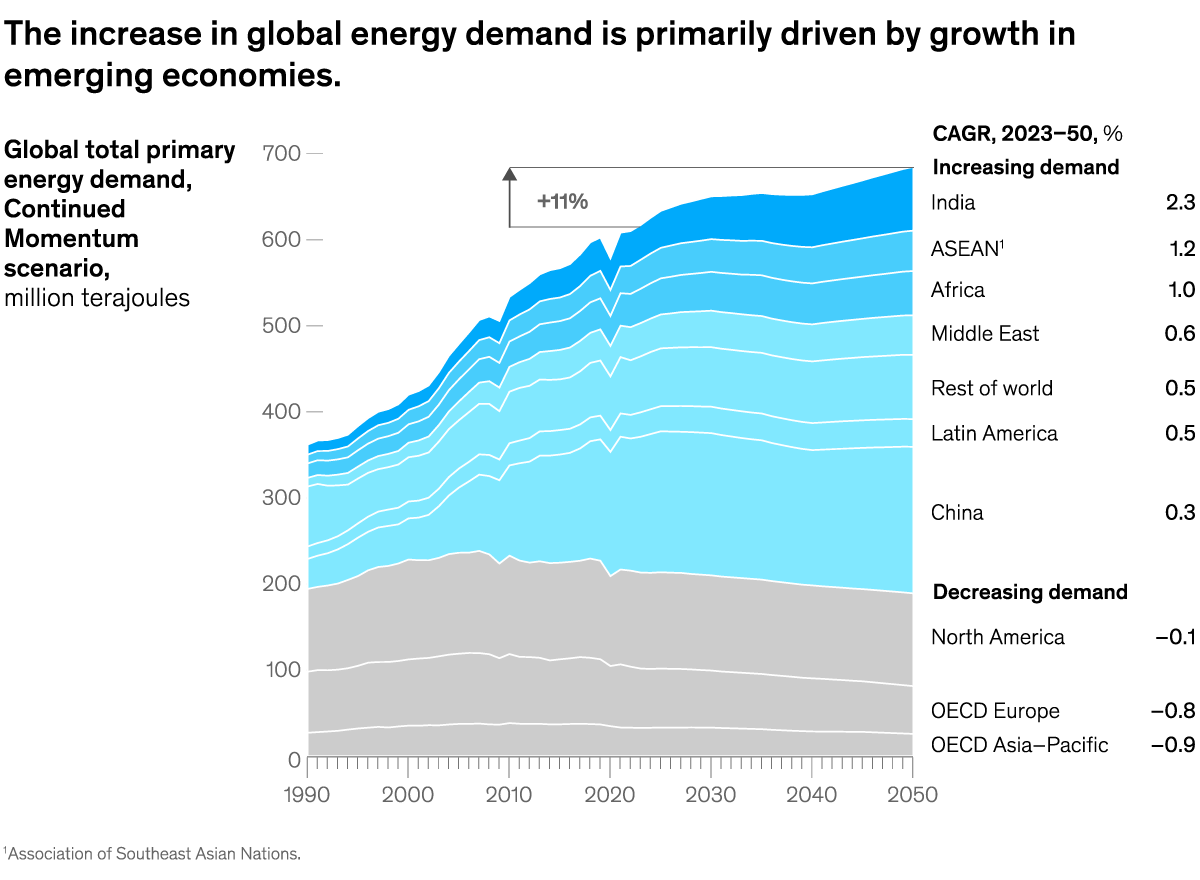




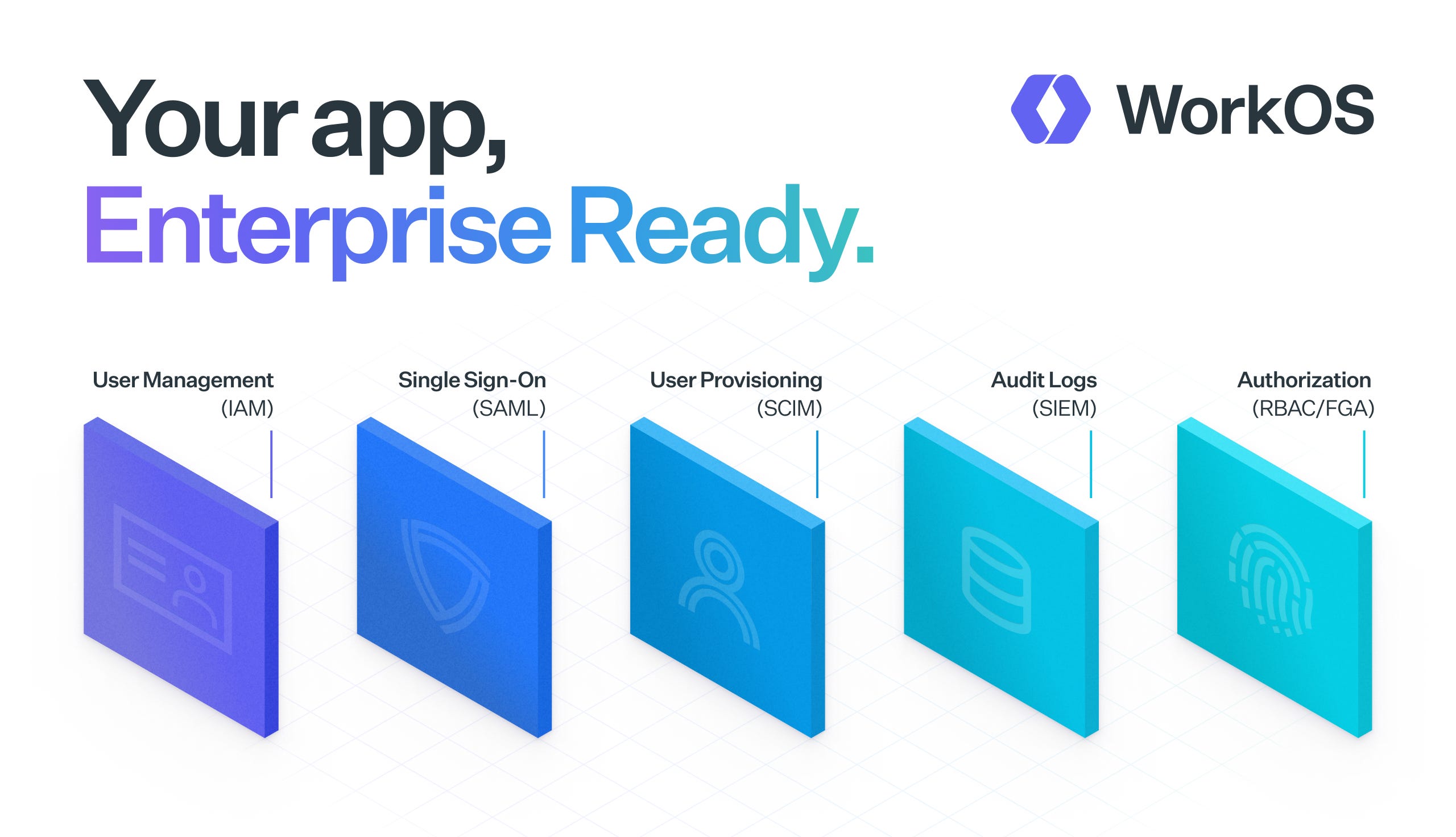

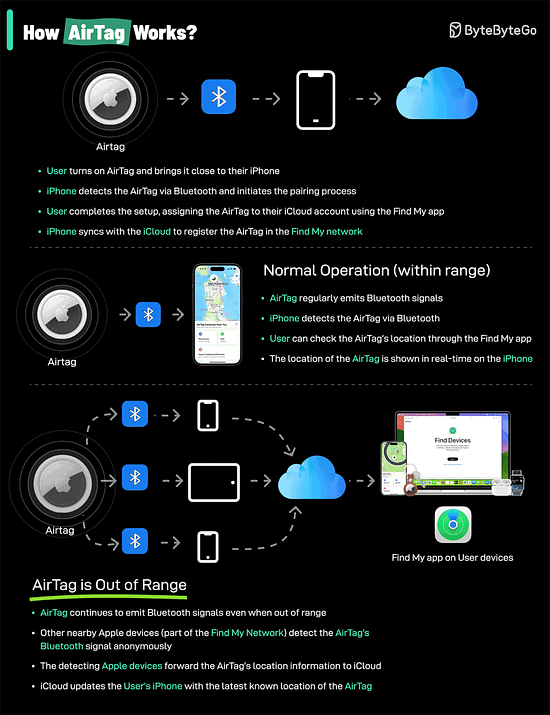

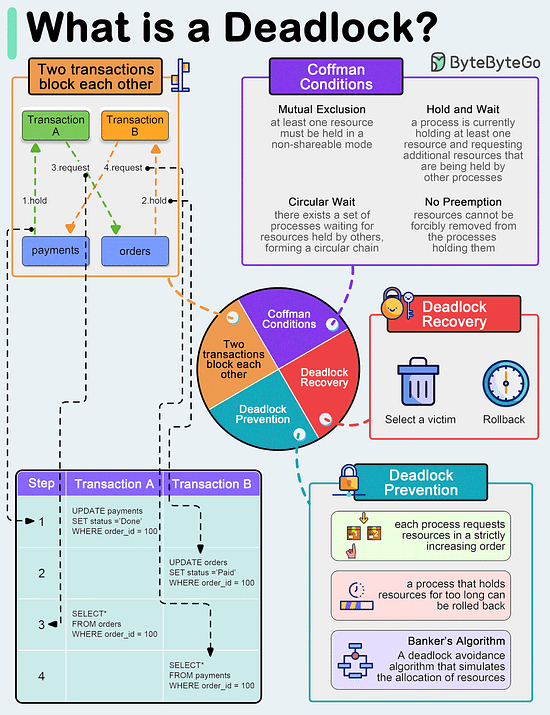








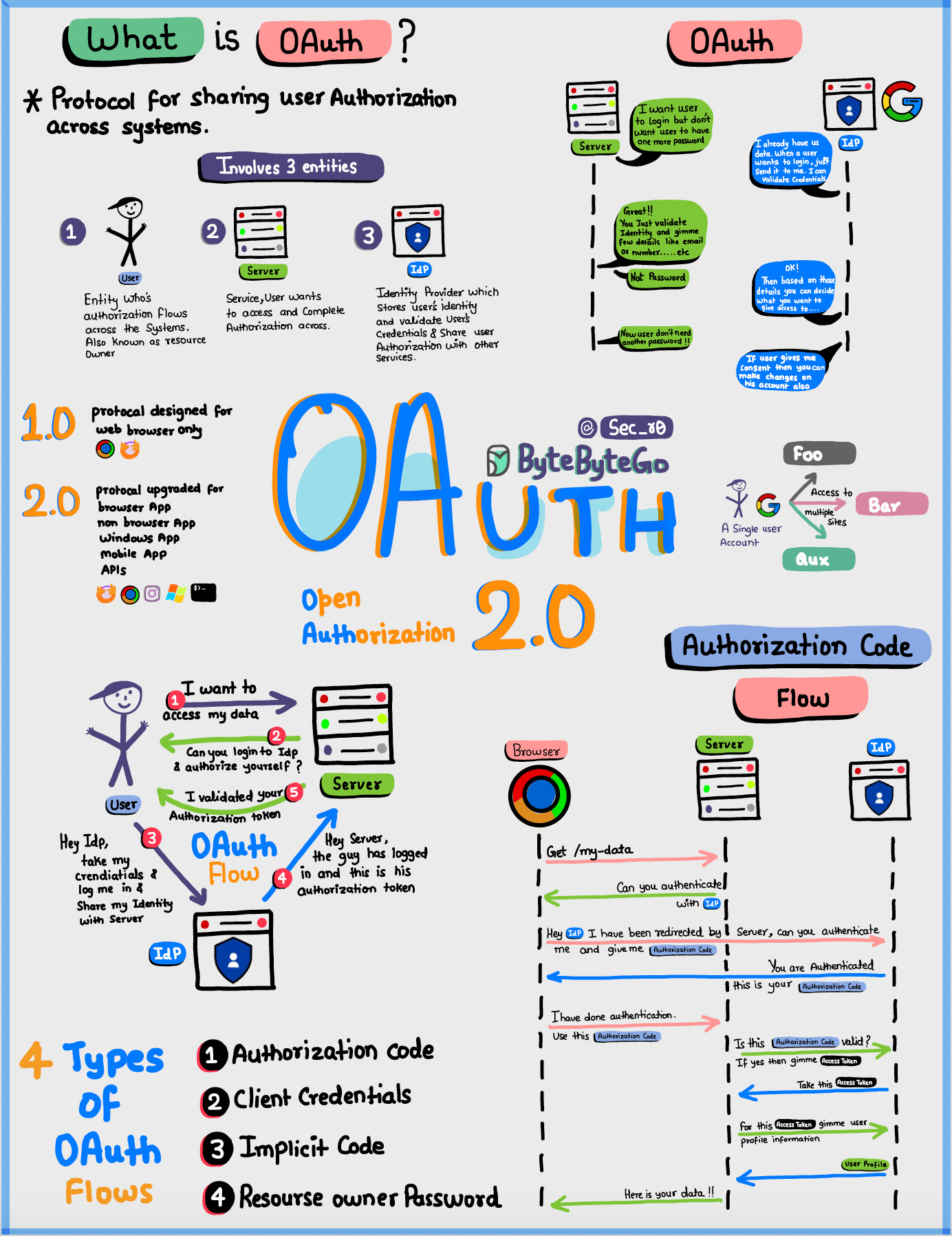



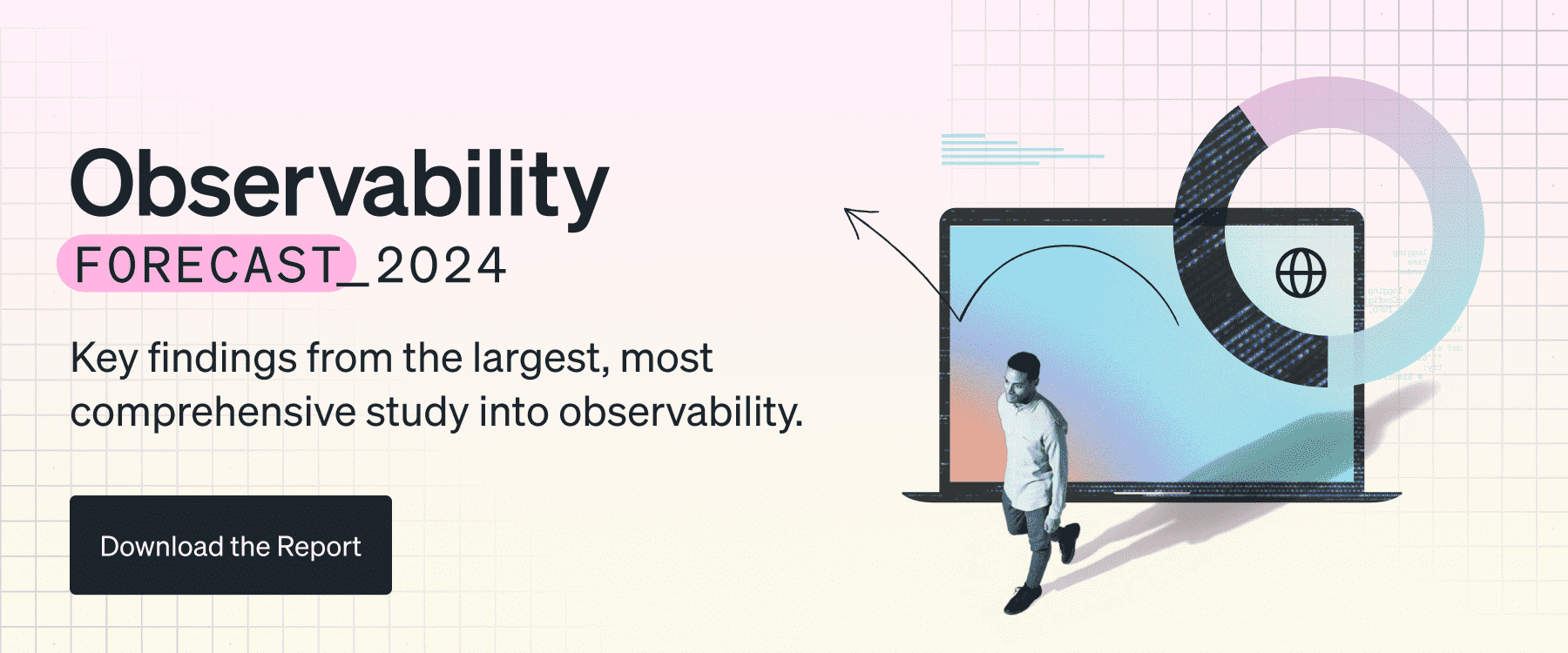
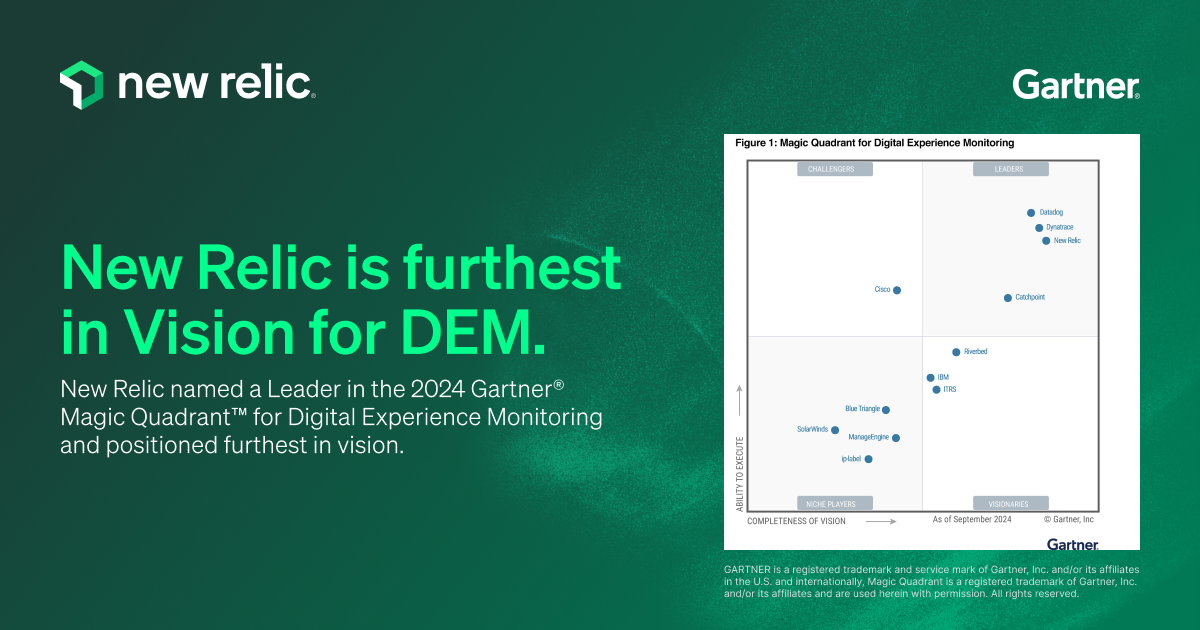
.png)

